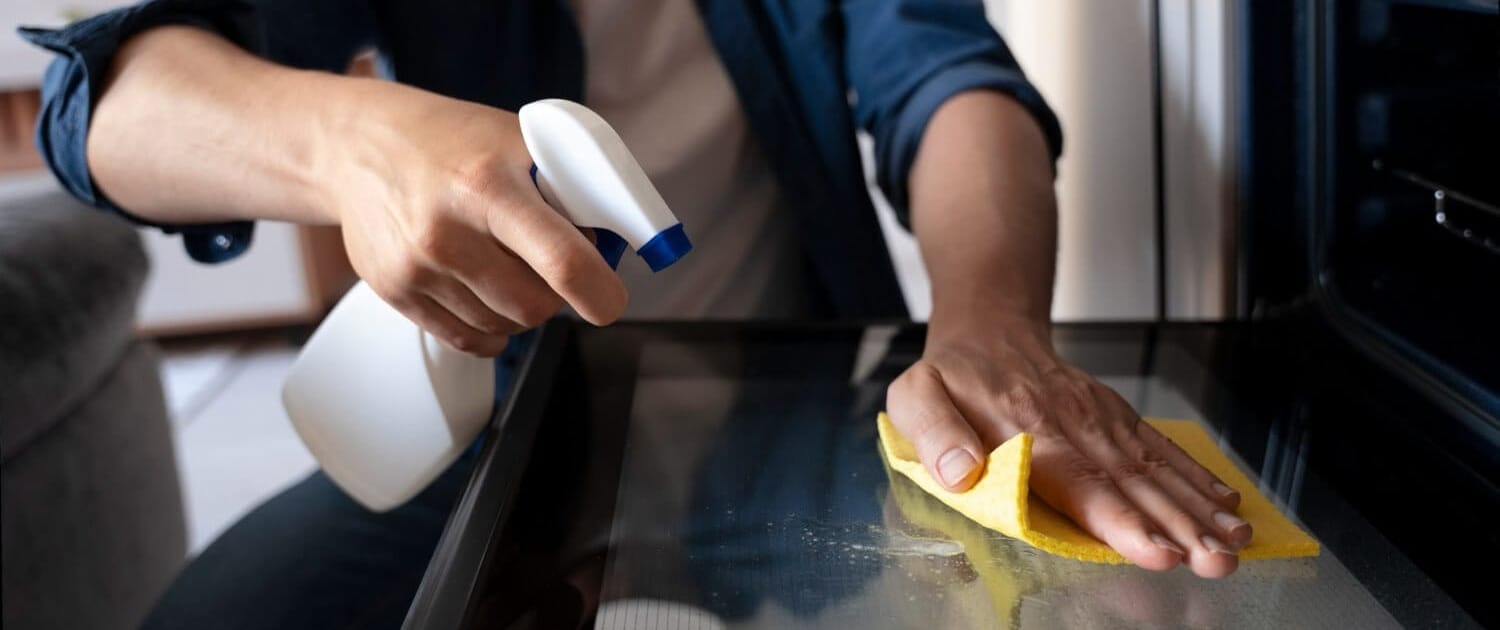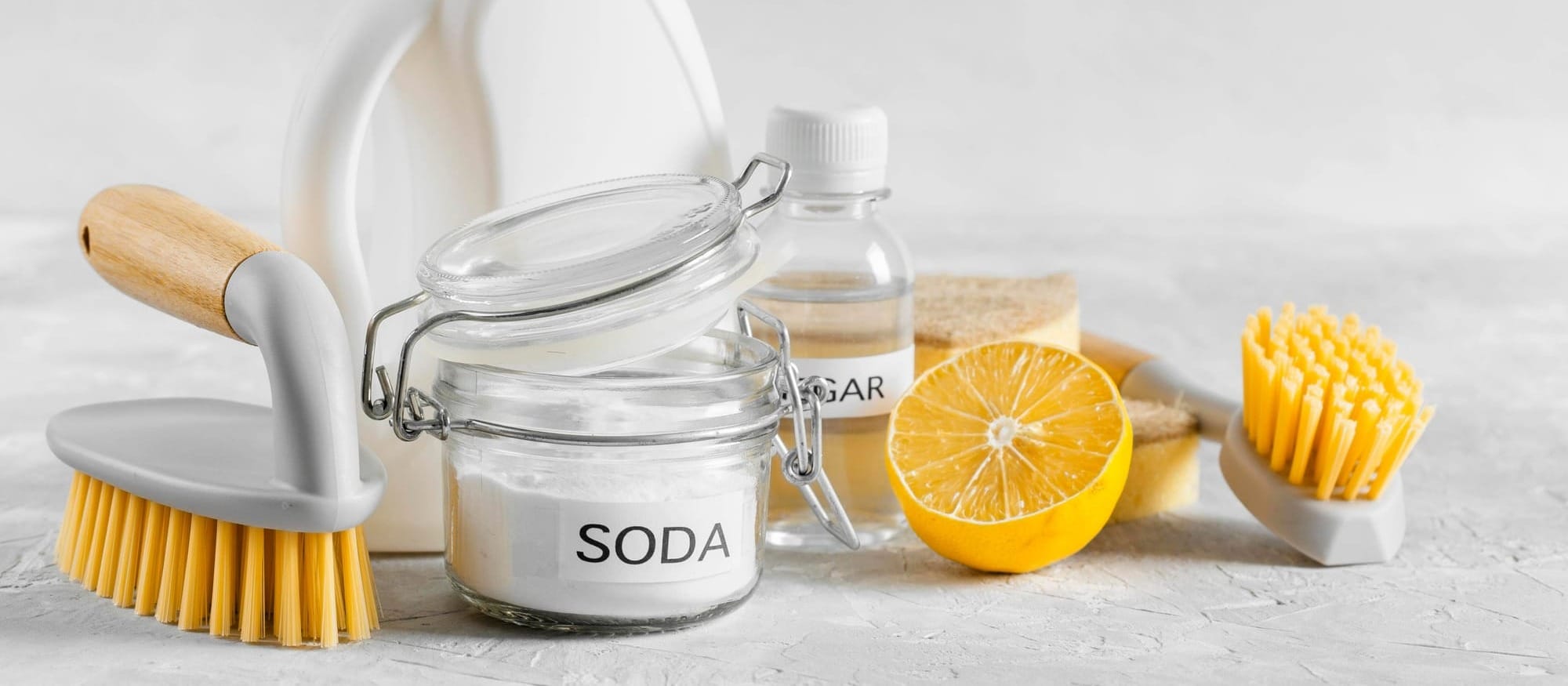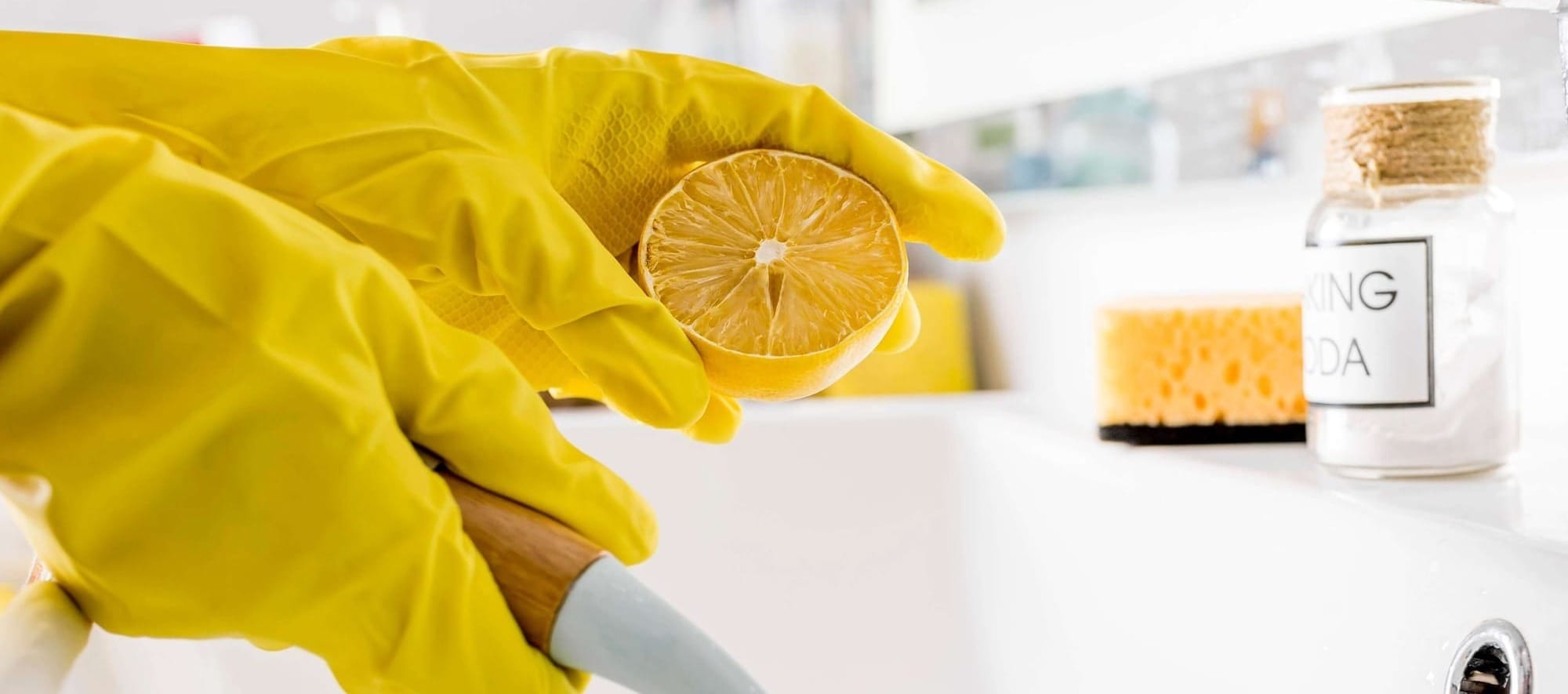Creating a clean, healthy, and environmentally friendly kitchen doesn’t have to involve expensive store-bought cleaners loaded with chemicals. Instead, you can make your own eco-friendly kitchen cleaners using simple, natural ingredients. These DIY solutions are not only better for the environment but also safe for your family. Here are some practical recipes and tips to get you started.
In This Article
- Why Choose DIY Eco-Friendly Kitchen Cleaners?
- Essential Ingredients for DIY Cleaners
- DIY Cleaner Recipes
- Tips for Using DIY Kitchen Cleaners
Why Choose DIY Eco-Friendly Kitchen Cleaners?

- Health Benefits: Avoid exposure to harmful chemicals found in commercial cleaners. Many store-bought products contain harsh ingredients like ammonia, bleach, and artificial fragrances, which can cause respiratory issues, skin irritations, and other health problems.
- Cost-Effective: Save money by using inexpensive, readily available ingredients. Many DIY cleaners can be made with items you probably already have in your kitchen, such as vinegar, baking soda, and lemon.
- Environmental Impact: Reduce your carbon footprint by minimizing plastic waste and using biodegradable ingredients. Commercial cleaning products often come in single-use plastic containers that contribute to landfill waste. By making your own cleaners, you can reuse containers and reduce plastic consumption.
Essential Ingredients for DIY Cleaners

- White Vinegar: A natural disinfectant that cuts through grease and grime. It is acidic, which makes it effective at dissolving mineral deposits, grease, and grime. It also has antibacterial properties.
- Baking Soda: Excellent for scrubbing and neutralizing odors. Baking soda is a mild abrasive, making it ideal for scrubbing surfaces without scratching them. It also helps to neutralize acidic odors.
- Lemon: Provides natural antibacterial properties and a fresh scent. The citric acid in lemons is effective at cutting through grease and acting as a natural disinfectant. Plus, the fresh scent of lemon helps to deodorize your kitchen.
- Castile Soap: A gentle yet effective cleaner. Made from vegetable oils, Castile soap is biodegradable and non-toxic, making it a great choice for eco-friendly cleaning.
- Essential Oils: Add pleasant fragrances and additional cleaning properties. Oils like tea tree, eucalyptus, lavender, and lemon not only add a pleasant aroma but also have antibacterial, antifungal, and antiviral properties.
DIY Cleaner Recipes

1. All-Purpose Cleaner
Use: Ideal for countertops, stovetops, kitchen cabinets, and other general kitchen surfaces. This cleaner is great for daily cleaning tasks and keeping surfaces disinfected.
Ingredients:
- 1 cup white vinegar
- 1 cup water
- 10 drops of essential oil (e.g., tea tree, lavender, or lemon)
Instructions:
- Combine vinegar and water in a spray bottle.
- Add essential oil for fragrance and extra cleaning power.
- Shake well before each use.
- Spray on surfaces and wipe clean with a cloth.
2. Baking Soda Scrub
Use: Perfect for tough stains and buildup on sinks, stovetops, and kitchen tiles. It works well on stubborn grime and can be used to scrub cutting boards and baking sheets.
Ingredients:
- 1 cup baking soda
- 10-20 drops of essential oil (e.g., orange or peppermint)
- Water (enough to form a paste)
Instructions:
- Mix baking soda and essential oil in a bowl.
- Add water gradually to create a paste.
- Apply the paste to surfaces that need scrubbing, such as sinks and stovetops.
- Scrub with a sponge or brush and rinse with water.
3. Glass and Window Cleaner
Use: Effective for cleaning glass surfaces such as windows, mirrors, and glass doors. It leaves a streak-free finish, making it ideal for any shiny, transparent surface in the kitchen.
Ingredients:
- 1 cup water
- 1 cup white vinegar
- 1 tablespoon cornstarch
- 10 drops of essential oil (e.g., eucalyptus or lavender)
Instructions:
- Mix water, vinegar, and cornstarch in a spray bottle.
- Add essential oil for a pleasant scent.
- Shake well before each use.
- Spray on glass surfaces and wipe with a microfiber cloth for a streak-free finish.
4. Lemon and Vinegar Degreaser
Use: Excellent for cutting through grease on stovetops, ovens, range hoods, and countertops. It can also be used to clean greasy pots, pans, and baking dishes.
Ingredients:
- Peels of 2-3 lemons
- White vinegar
Instructions:
- Place lemon peels in a jar and cover them with vinegar.
- Let the mixture sit for 2-3 weeks, shaking occasionally.
- Strain the liquid and transfer it to a spray bottle.
- Use on greasy surfaces and wipe clean.
5. Citrus Enzyme Cleaner
Use: Suitable for all-purpose cleaning tasks, especially effective on greasy and grimy surfaces. It can be used on countertops, sinks, and appliances, providing a fresh citrus scent.
Ingredients:
- Peels of 2-3 oranges or other citrus fruits
- 1 cup brown sugar
- 4 cups water
- 1 tablespoon yeast (optional)
Instructions:
- Place the citrus peels, brown sugar, and water in a large jar.
- Add yeast for faster fermentation, if desired.
- Seal the jar and let it sit for 2-3 weeks, shaking occasionally.
- Strain the liquid and transfer it to a spray bottle.
- Use as an all-purpose cleaner.
This citrus enzyme cleaner is a powerful natural cleaner that harnesses the cleaning power of citrus peels and the fermentation process. It’s effective at cutting through grease and grime and has a fresh, citrusy scent.
6. Disinfecting Wipes
Use: Handy for quick clean-ups and disinfecting high-touch areas like doorknobs, light switches, and refrigerator handles. They are also great for wiping down kitchen surfaces and appliances.
Ingredients:
- 1 cup water
- 1/2 cup white vinegar
- 1/2 cup rubbing alcohol
- 10 drops of essential oil (e.g., tea tree or eucalyptus)
- Reusable cloths or old T-shirts cut into squares
Instructions:
- Mix water, vinegar, rubbing alcohol, and essential oil in a container.
- Place the cloth squares in the mixture and soak them.
- Store the soaked cloths in an airtight container.
- Use the cloths to wipe down surfaces and disinfect as needed.
For additional recipes, visit Global Healing for comprehensive guides on green cleaning.
Tips for Using DIY Kitchen Cleaners
- Label Your Bottles: Clearly mark each bottle to avoid confusion.
- Spot Test: Test cleaners on a small area first to ensure they don’t damage surfaces.
- Storage: Keep cleaners in a cool, dark place to preserve their effectiveness.
- Reuse and Recycle: Use reusable spray bottles and cloths to reduce waste.



